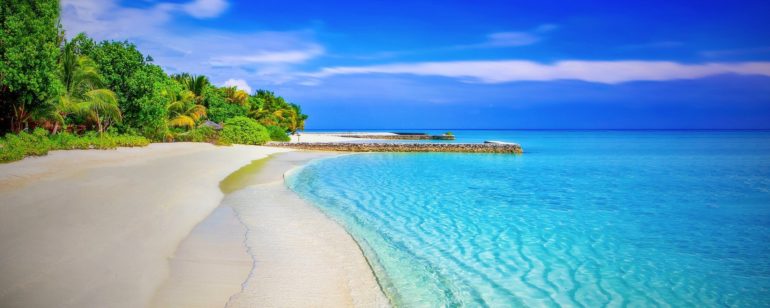A new Yale study suggests that aerosols in the atmosphere may be temporarily holding down ocean temperatures in the eastern equatorial Pacific.
The findings, published in the journal Nature Climate Change, are an indication that the surprisingly modest warming observed in the tropical Pacific in recent decades may be short-lived, with more dramatic changes yet to come. The results also may help climate scientists make better predictions for how global warming will affect weather patterns, ecosystems, and storm impacts throughout the Pacific rim.
“Understanding how the tropics are changing due to global warming is an important task for scientists to tackle because this region is a key driver of weather and climate events around the globe,” said first author Ulla Heede, a graduate student in the Department of Earth & Planetary Sciences at Yale.
The study’s senior author is Yale climate scientist Alexey Fedorov, a professor of ocean and atmospheric sciences in the Faculty of Arts and Sciences. Fedorov’s work investigates global weather systems and phenomena such as the Atlantic meridional overturning circulation, one of the planet’s largest water circulation systems, and El Niño events.
In the new study, Heede and Fedorov focus on the eastern equatorial Pacific Ocean, a region characterized by cold water that rises to the surface, driven by surface winds known as trade winds. Periodic relaxing of these winds causes El Niño, the warm phase of the El Niño Southern Oscillation, featuring unusually warm water in the Pacific.
If the eastern Pacific warms at a faster rate than surrounding oceans, it signals a slowing of atmospheric tropical circulation known as the Walker circulation—which manifests in a reduction of both the trade winds and the amount of cold water rising from the ocean depths.
“A slowdown of tropical circulation would mean changes to the El Niño events and the tropical rain belt,” Fedorov said. “These changes would affect societies across the tropics and beyond.”
But that slowdown hasn’t occurred yet, despite numerous climate model projections. In fact, the region has warmed less than surrounding areas or even cooled in recent decades, while the tropical atmospheric circulation strengthened. This prompts the question: Is this just natural climate variability or are other factors to blame?
According to the new Yale study, it was atmospheric aerosols, minute particles that are emitted by multiple sources, including human activities.
“It is known that aerosols arising from air pollution and combustion have a cooling effect on the Earth’s climate, and that aerosols have partially canceled out some warming effects from greenhouse gases since pre-industrial time,” Heede said. “We show in our study that aerosols are likely contributing to the delay in eastern Equatorial warming and the slowdown of tropical circulation, which would have otherwise occurred.”
Heede added, “It is important to keep in mind that this delay is temporary. In the future, as greenhouse gas emissions increase further, they will become the dominant factor for tropical Pacific climate, likely leading to enhanced eastern Pacific warming.”
It is likely that the delay in eastern Equatorial warming will continue for several decades, the researchers said.
Heede and Fedorov said there may also be a thermostat-like mechanism operating in the tropical Pacific that is contributing to the delay in warming. Cold water upwells in the eastern equatorial Pacific due to the trade winds. With global warming, the deeper ocean warms slower than the surface waters, and this contributes to a delay in warming of the eastern equatorial Pacific, while temperature in the western equatorial Pacific keeps rising. These two factors strengthen the trade winds—as these winds critically depend on the east-west ocean temperature contrast—and maintain the upwelling of relatively cooler waters until the deeper ocean warms enough to overcome this effect.
For the study, the researchers worked with datasets from the Coupled Model Intercomparison Project (CMIP6), a long-term, international climate research program, using a compilation of 40 different climate models. The researchers conducted climate simulations of historical periods from the past and also projected future climate scenarios.
Scientists more confident projecting ENSO changes under global warming
More information:
Ulla K. Heede et al, Eastern equatorial Pacific warming delayed by aerosols and thermostat response to CO2 increase, Nature Climate Change (2021). DOI: 10.1038/s41558-021-01101-x
Citation:
Aerosols add a new wrinkle to climate change in the tropical Pacific Ocean (2021, July 29)
retrieved 30 July 2021
from https://phys.org/news/2021-07-aerosols-wrinkle-climate-tropical-pacific.html
This document is subject to copyright. Apart from any fair dealing for the purpose of private study or research, no
part may be reproduced without the written permission. The content is provided for information purposes only.



